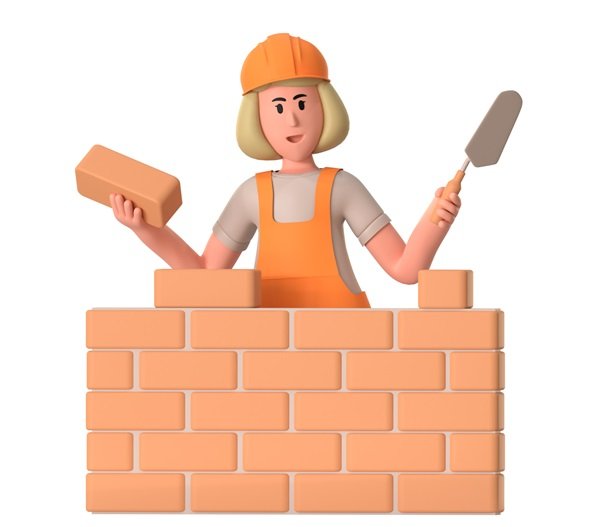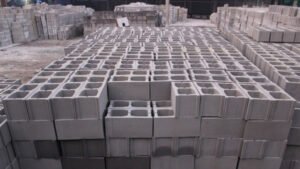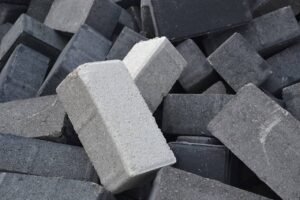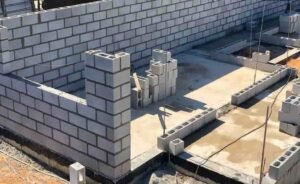Table of Contents
Introduction:
Selecting the right construction material is a crucial decision that profoundly influences the outcome of any building project. Amid the multitude of choices, the ongoing debate between cement bricks or red bricks takes center stage. This in-depth exploration aims to highlight the myriad advantages of cement bricks, making a compelling case for their superiority over traditional red bricks.

Strength and Durability:
Cement bricks have earned widespread acclaim owing to their exceptional strength and durability. Formulated with a blend of cement, sand, and aggregates, these bricks exhibit higher compressive strength compared to their red counterparts. This elevated strength not only imparts structural integrity but also guarantees longevity, establishing cement bricks as a dependable choice for diverse construction projects.
Moreover, the robust composition of cement bricks reduces susceptibility to cracking and weathering, common issues faced by red bricks over time. The durability factor plays a pivotal role in minimizing maintenance costs and extending the lifespan of the constructed structure.
Uniformity and Precision:
Inherent variations in size and shape characterize red bricks. These disparities can pose challenges during construction, leading to inefficiencies and potential aesthetic drawbacks. In contrast, cement bricks are precision-manufactured, ensuring uniform dimensions and smooth surfaces. This uniformity not only streamlines construction but also results in a visually appealing final product.
The precise dimensions of cement bricks make them ideal for intricate architectural designs and precise construction requirements. Builders and architects appreciate the predictability and consistency that cement bricks bring to the table, facilitating a seamless construction process.
Environmental Sustainability:
In an era where sustainability is paramount, cement bricks emerge as a greener alternative to traditional red bricks. The production of cement bricks involves significantly less energy consumption compared to the energy-intensive process of firing red bricks in kilns. Additionally, manufacturers can produce cement bricks using recycled materials, contributing to the reduction of environmental impact.
Opting for cement bricks aligns with the principles of eco-friendly building practices, making it a responsible choice for environmentally conscious builders. As the construction industry continues to emphasize sustainable solutions, cement bricks stand out as a forward-thinking and environmentally responsible building material.
Resistance to Termites and Moisture:
Red bricks are susceptible to termite infestations and moisture absorption, compromising structural integrity over time. Cement bricks, however, exhibit remarkable resistance to termites and moisture.
The composition of cement bricks creates an inhospitable environment for termites, offering a durable and pest-free solution. Additionally, the low porosity of cement bricks minimizes moisture absorption, reducing the risk of damage and ensuring construction longevity. This resistance to termites and moisture proves advantageous, especially in regions with high humidity or termite prevalence.
Fire Resistance:
Concerning fire safety, cement bricks hold a distinct advantage over red bricks. The manufacturing process involves curing at high temperatures, resulting in bricks highly resistant to fire. This inherent fire-resistant property adds an extra layer of safety to buildings constructed with cement bricks, making them an ideal choice for areas prone to fire hazards.
The fire resistance of cement bricks enhances overall safety, providing peace of mind to homeowners, builders, and occupants. This crucial factor positions cement bricks as a top choice in regions susceptible to wildfires or other fire-related risks.
Cement Bricks or Red Bricks: A Comprehensive Table
| Feature | Cement Bricks | Red Bricks |
|---|---|---|
| Strength and Durability | Higher compressive strength, enhanced durability | Lower compressive strength, susceptible to weathering |
| Uniformity and Precision | Manufactured with precision, uniform dimensions | Inherent variations in size and shape |
| Environmental Sustainability | Greener alternative, lower energy consumption | Energy-intensive production, higher environmental impact |
| Resistance to Termites | Resistant to termites | Susceptible to termite infestations |
| Resistance to Moisture | Low porosity, minimizes moisture absorption | Prone to moisture absorption, may lead to structural issues |
| Fire Resistance | Highly resistant to fire | Limited resistance, may not withstand high temperatures |
Conclusion:
In the ongoing debate between cement bricks or red bricks, a thorough examination of their respective attributes reveals that cement bricks offer a multitude of advantages, positioning them as a superior choice for construction projects. From enhanced strength and durability to environmental sustainability, resistance to termites, moisture, and fire, cement bricks outshine red bricks on multiple fronts.
As the construction industry evolves, embracing innovative and superior materials like cement bricks becomes imperative for achieving robust, sustainable, and long-lasting structures. When faced with the decision of “cement bricks or red bricks,” the answer is unequivocal – cement bricks stand as the modern, reliable, and environmentally conscious choice for builders aiming for excellence in construction. With numerous advantages and adaptability to diverse construction requirements, cement bricks are poised to play a pivotal role in shaping the future of sustainable and resilient buildings.
Read More on which is better – cement bricks or red bricks here.



